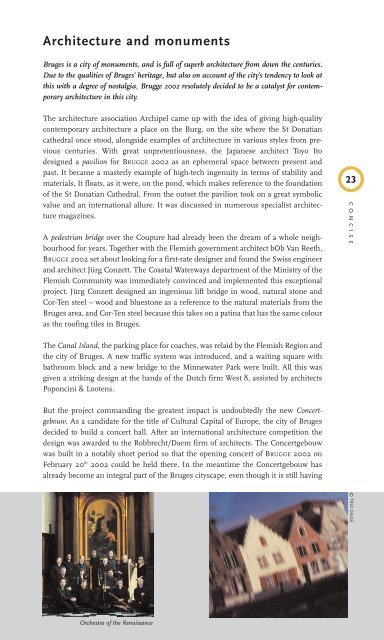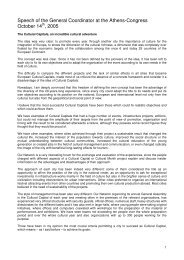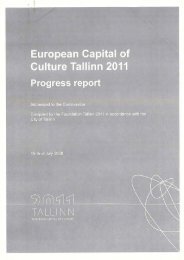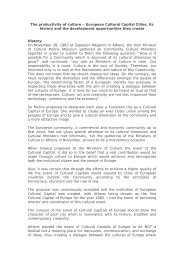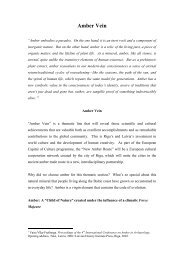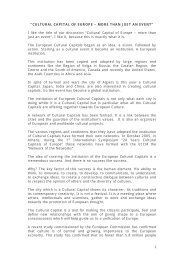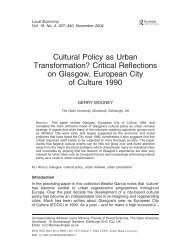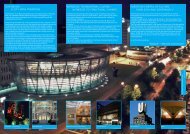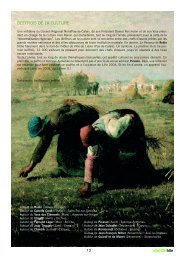Concise.pdf - Brugge Plus
Concise.pdf - Brugge Plus
Concise.pdf - Brugge Plus
- No tags were found...
Create successful ePaper yourself
Turn your PDF publications into a flip-book with our unique Google optimized e-Paper software.
Architecture and monuments<br />
Bruges is a city of monuments, and is full of superb architecture from down the centuries.<br />
Due to the qualities of Bruges’ heritage, but also on account of the city’s tendency to look at<br />
this with a degree of nostalgia, <strong>Brugge</strong> 2002 resolutely decided to be a catalyst for contemporary<br />
architecture in this city.<br />
The architecture association Archipel came up with the idea of giving high-quality<br />
contemporary architecture a place on the Burg, on the site where the St Donatian<br />
cathedral once stood, alongside examples of architecture in various styles from previous<br />
centuries. With great unpretentiousness, the Japanese architect Toyo Ito<br />
designed a pavilion for BRUGGE 2002 as an ephemeral space between present and<br />
past. It became a masterly example of high-tech ingenuity in terms of stability and<br />
materials. It floats, as it were, on the pond, which makes reference to the foundation<br />
of the St Donatian Cathedral. From the outset the pavilion took on a great symbolic<br />
value and an international allure. It was discussed in numerous specialist architecture<br />
magazines.<br />
A pedestrian bridge over the Coupure had already been the dream of a whole neighbourhood<br />
for years. Together with the Flemish government architect bOb Van Reeth,<br />
BRUGGE 2002 set about looking for a first-rate designer and found the Swiss engineer<br />
and architect Jürg Conzett. The Coastal Waterways department of the Ministry of the<br />
Flemish Community was immediately convinced and implemented this exceptional<br />
project. Jürg Conzett designed an ingenious lift bridge in wood, natural stone and<br />
Cor-Ten steel – wood and bluestone as a reference to the natural materials from the<br />
Bruges area, and Cor-Ten steel because this takes on a patina that has the same colour<br />
as the roofing tiles in Bruges.<br />
The Canal Island, the parking place for coaches, was relaid by the Flemish Region and<br />
the city of Bruges. A new traffic system was introduced, and a waiting square with<br />
bathroom block and a new bridge to the Minnewater Park were built. All this was<br />
given a striking design at the hands of the Dutch firm West 8, assisted by architects<br />
Poponcini & Lootens.<br />
But the project commanding the greatest impact is undoubtedly the new Concertgebouw.<br />
As a candidate for the title of Cultural Capital of Europe, the city of Bruges<br />
decided to build a concert hall. After an international architecture competition the<br />
design was awarded to the Robbrecht/Daem firm of architects. The Concertgebouw<br />
was built in a notably short period so that the opening concert of BRUGGE 2002 on<br />
February 20 th 2002 could be held there. In the meantime the Concertgebouw has<br />
already become an integral part of the Bruges cityscape, even though it is still having<br />
23<br />
CONCISE © TRUI GALLE<br />
Orchestra of the Renaissance


